An absolutely lovely paper, if I may say so... Joint effort from @tuanbuilab.bsky.social, Turgay Akay, and the Beatostone lab, aka Rob Brownstone's lab and mine
02.09.2025 19:32 — 👍 10 🔁 2 💬 2 📌 0
A Neural Circuit for Modular Gating of Organ Somatosensation https://www.biorxiv.org/content/10.1101/2025.08.27.672386v1
01.09.2025 15:15 — 👍 4 🔁 1 💬 0 📌 0
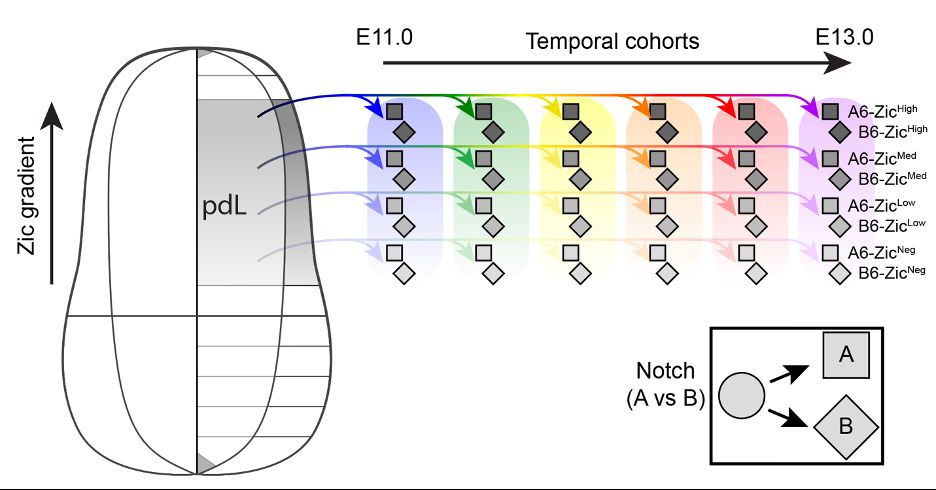
With the two orthogonal factors – birth time and and a gradient of Zic genes – we are able to describe the mechanisms of cellular diversity and structure which come together to produce the dorsal horn! Message me and let’s start figuring out what this diversity means for spinal cord physiology! 7/7
17.03.2025 16:23 — 👍 3 🔁 0 💬 0 📌 0
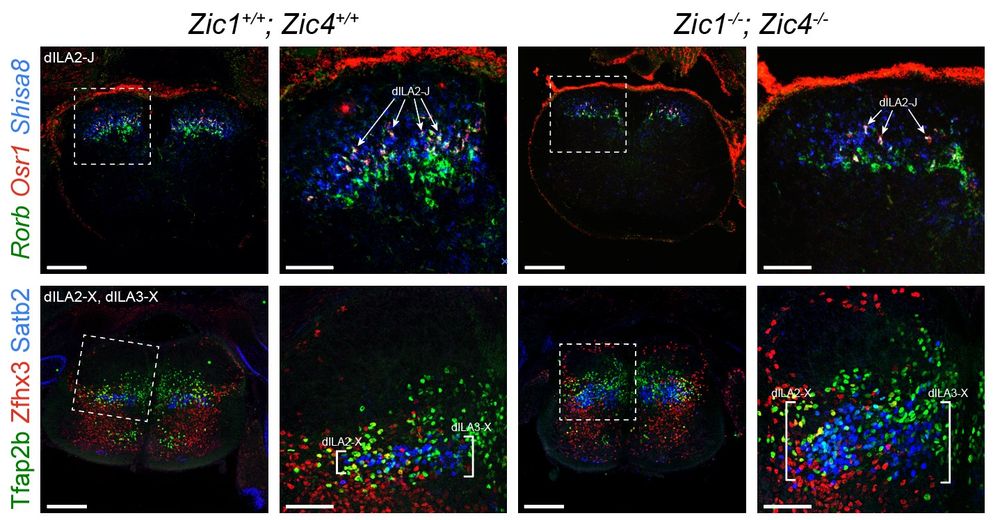
Inhibitory neurons from the same family vary by Zic expression: Rorb neurons express lots of Zic and Satb2 neurons express almost none, and this directs their laminar position. Loss of Zics = drop of Rorb, increase in Satb2 neurons, and so on for each family. 6/n
17.03.2025 16:23 — 👍 2 🔁 0 💬 1 📌 0
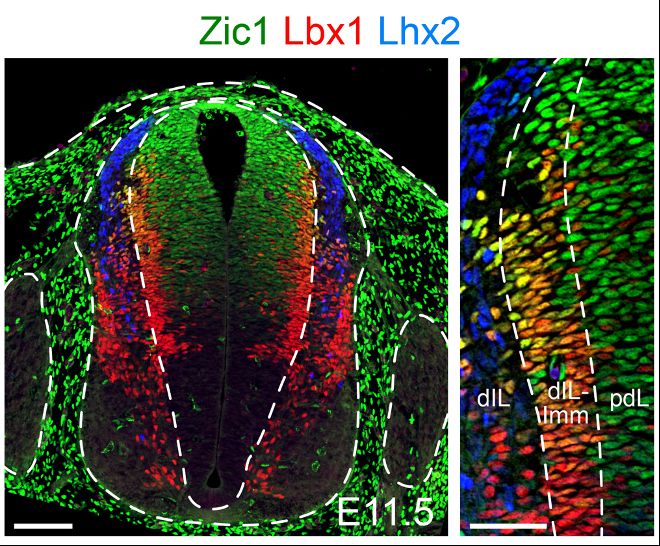
Well, time isn’t everything! We find a progenitor gradient of the Zic genes which are imprinted onto dorsal horn neurons as they’re born. 5/n
17.03.2025 16:21 — 👍 1 🔁 0 💬 1 📌 0
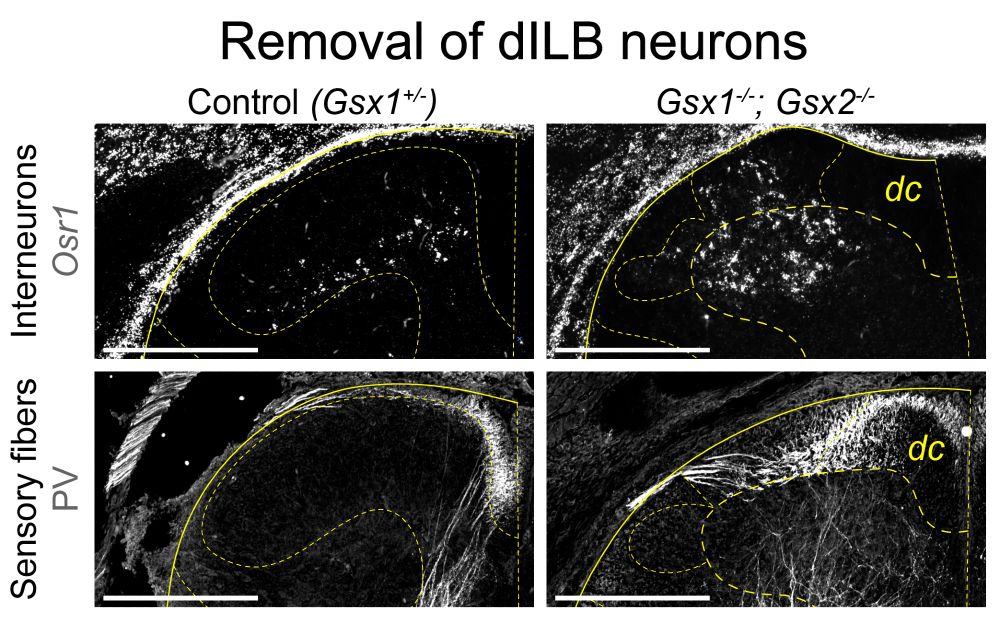
Excitatory neurons are particularly crucial – only when you lose excitatory neurons does laminar structure collapse.
Inhibitory neurons also are born in a sequence of families though – but not quite so neatly. Despite that, they are way more diverse. So what else is going on? 4/n
17.03.2025 16:20 — 👍 1 🔁 0 💬 1 📌 0
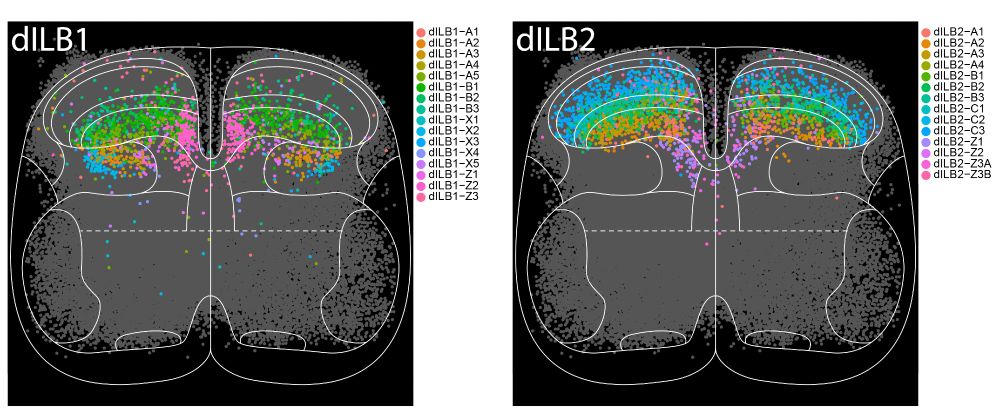

By birthdating families of dorsal horn neurons, we show that the order excitatory neurons are born in is the order of their laminae! Here, time is structure! 3/n
17.03.2025 16:19 — 👍 1 🔁 0 💬 1 📌 0
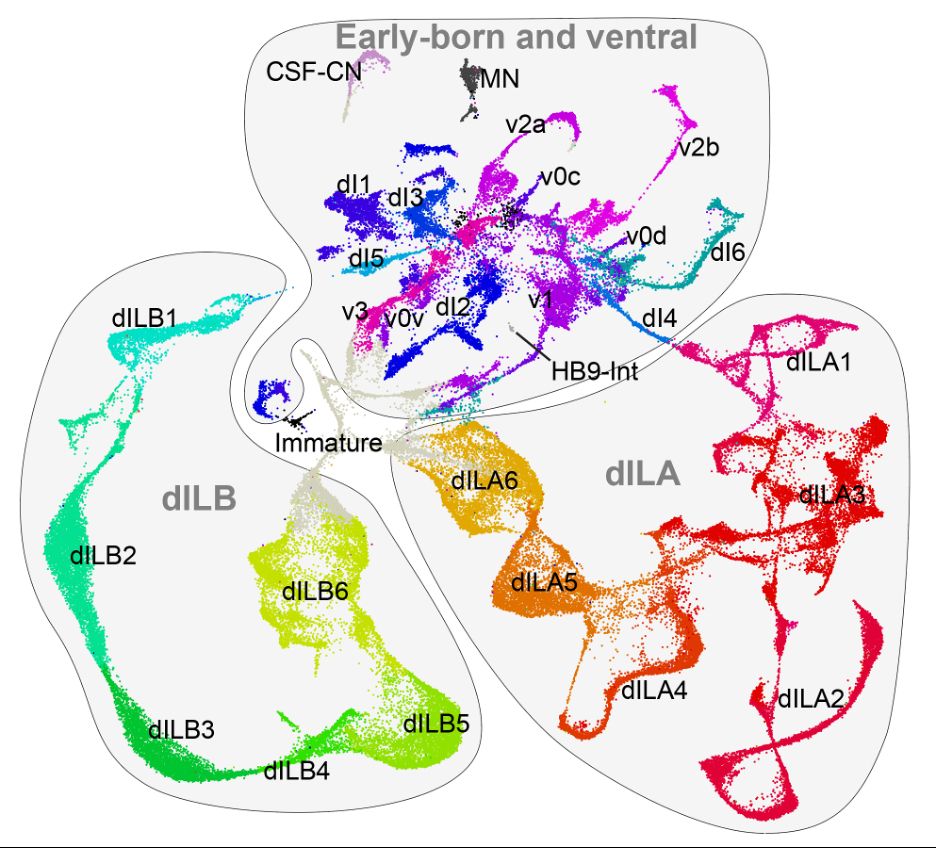
We show a new embryonic single-cell spinal cord atlas, hugely expanding the types of known neurons. We see the usual crowd, plus large families of dorsal excitatory (dILB) and inhibitory (dILA) neurons which match the families described postnatally. dILB3 = Grp family, dILA5 = Pdyn family, etc. 2/n
17.03.2025 16:18 — 👍 1 🔁 0 💬 1 📌 0
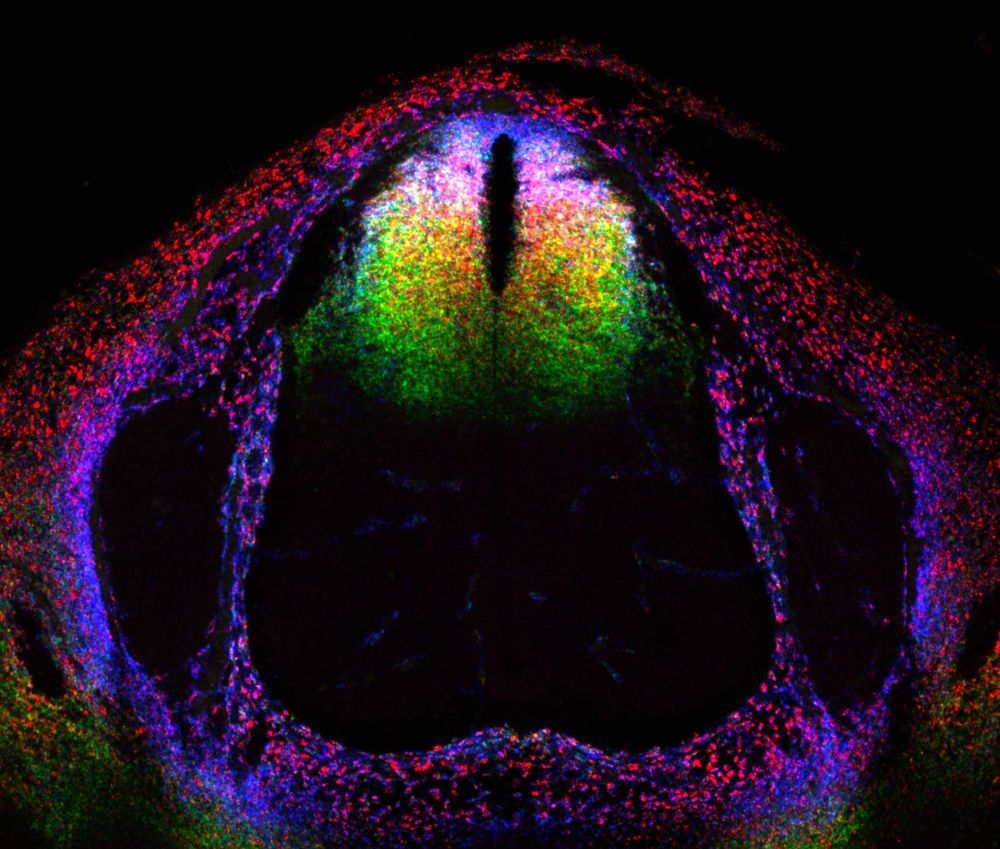
Check out my postdoc work at Ariel Levine’s lab, hot and fresh, describing how you build a dorsal horn!
www.biorxiv.org/content/10.1...
17.03.2025 16:16 — 👍 40 🔁 14 💬 1 📌 2
Interoception, Organ physiology, and Neuronal mechanisms of homeostasis (ION) Lab | Neuroscientist at OHSU | ionlaboratory.com | proud parent of cats | (she/they) 🏳️🌈🧠🧑🔬 views are my own
Scripps Research Professor. HHMI Investigator. Nobel Prize Physiology or Medicine 2021. Opinions my own.
Early Career Wellcome Trust fellow @UCL - fascinated by movements and the neural circuits shaping them.
Jane Coffin Childs Fund Fellow; postdoc in David Ginty lab at Harvard Medical School.
Former PhD student in Carandini&Harris lab at UCL.
shendure lab |. krishna.gs.washington.edu
G&D publishes high-quality research in molecular biology, cancer biology, development, neuroscience and related fields. In addition, G&D also publishes comprehensive Review Articles, Perspectives and Outlooks written by leading scientists.
We are the union of 5,000 early-career researchers at the National Institutes of Health, standing up for fair treatment, better working conditions, and a stronger future for science. | Proudly UAW 2750
Neuroscientist studying sensorimotor control. Associate Professor, Salk Institute for Biological Studies
Understanding life. Advancing health.
Postdoc in the spinal cord connections lab (Graham Lab) at Uni Newcastle Upon-thePacific (Aus) studying circuits of the Dorsal horn with a focus on projection neurons. Patching, imaging, love of fluorescent eye candy.
Dad to 2 ratbags and husband to 1.
University of Glasgow, Spinal Cord Research Group
Neuro and Developmental biologist. PostDoc at day. Supervillain at night. He/him #BlackLivesMatter #TransRightsAreHumanRights
@mads100tist@mastodon.social
circuit motifs of action selection, execution, & refinement | functional connectomics | assoc prof | lee.hms.harvard.edu
Husband, dad, neuroscientist, Governing Board member of Raynor Cerebellum Project, sailor, outdoor enthusiast, struggling athlete.
Professor of neurobiology of sensory systems @karolinska Institute, Stockholm, Sweden • single cell • development • cell state • system homeostasis • aging • auditory • vestibular • somatosensory • translational
Neuroscience, control of movement, motoneuron physiology and all that is spinal cord related







